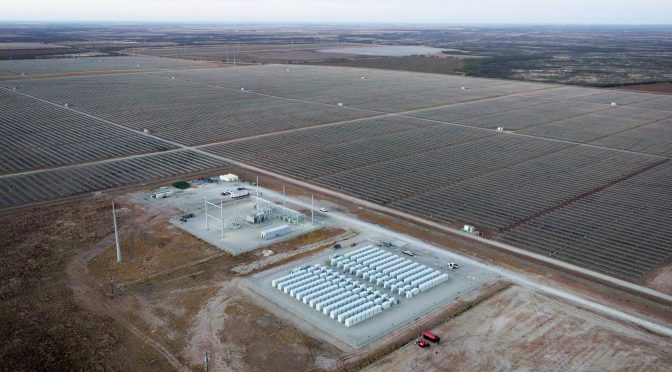Half of the energy storage capacity that Enel Green Power is building is located in Italy, and it’s about to reach 2 GW. Our goal is to reach 9 GW worldwide by 2030.
Batteries – and storage systems in general – are an essential tool for ensuring the continuity, reliability, and efficiency of the power grid. They are the main truly viable solution that will enable the growth of renewables, accelerate the energy transition, and foster independence from fossil fuels.
We talked to Giuseppe Cicerani, Head of Business Development Energy Storage at Enel Green Power (EGP), about this topic. “Our group’s action is focused on two main lines of development. On the one hand, we’re trying to enhance our hydroelectric resources by converting hydroelectric plants into pumped storage plants and retrofitting the existing ones. On the other hand, we’re developing new batteries for areas where the grid needs them to integrate new renewables and where the sites are not suitable for pumped storage.”
Investments for the energy transition
Our commitment to the sustainable transition of the power grids where we operate is evident: not only in the substantial resources that the Enel Group has dedicated to developing and creating new storage systems, but also in the investments we’re making to research and test new storage technologies.
To achieve Italy’s decarbonization goals, Enel Green Power has participated in all the auctions and long-term remuneration mechanisms implemented so far: from the Capacity Market and the Fast Reserve with delivery in 2023 to the Capacity Market with delivery in 2024. “These facilities are located mostly in Northern Italy, where there is a greater demand for its application expressed by the system, and also in Sardinia, where there is no gas transportation network, but there is a lot of sun and wind, and where coal plants will be replaced by a balanced mix of renewables, batteries, and networks,” added Cicerani.
“In Southern Italy, instead, we’ll see long-lasting batteries and storage systems, which will last at least 6-8 hours, and they’ll store the excess energy produced by photovoltaic plants during the day, following the implementation of the auctions introduced by Article 18 of Legislative Decree 210/2021, which was designed to facilitate the installation of new large storage systems for this very purpose.”
It will be an opportunity to enhance the potential of hydropower plants in Sardinia, Sicily, Abruzzo and Molise, which Enel Green Power identified as suitable to be repowered and converted into pumped storage plants, as well as for new long-lasting batteries and other promising technologies.
Italy’s role in Enel Green Power’s action
Between 2019 and today, we’ve finalized contracts to build battery-powered plants around the world for a total of 3,500 MW. “So far, 370 MW are already operational, and another 2,900 MW will come online by 2024,” explained Cicerani. “The resources invested in Italy in this section of the business are particularly significant: over the next few years, almost half of the capacity (around 1,700 MW) will be installed in Italy, which is two thirds of our total investments. The remainder is divided between the United States, Chile, Portugal, Spain, Colombia, and Peru.”
So far, in the past three or four years, we’ve experienced exponential growth, going from a few MW to several thousand – but despite the numbers, we still have a long way to go: we aim to reach 9,000 MW (9 GW) globally by 2030. That amount would be enough to hybridize 30% of Enel Green Power’s renewable fleet with storage systems, and also to ensure that the power grid is supplied with the right combination of renewables and storage systems to cut greenhouse gas emissions while providing the flexibility needed to operate.
Luckily, there are several options at our disposal, considering that Enel Green Power has over 76 GW of different kinds of storage systems in the planning and development phase: 69 GW of batteries (including another 6 GW in Italy) and 7 GW of hydroelectric pumps (of which 2.5 GW in Italy). “These are very significant numbers compared to the size of the overall market: in 2021, a record year for the growth of storage systems, installed capacity was just 10 GW worldwide. Still,” concludes Cicerani, “our position is a function of a market that has doubled every year in the past five years, and which is expected to keep on growing by 40% every year until 2030.”


